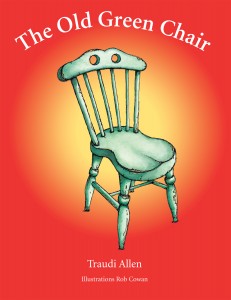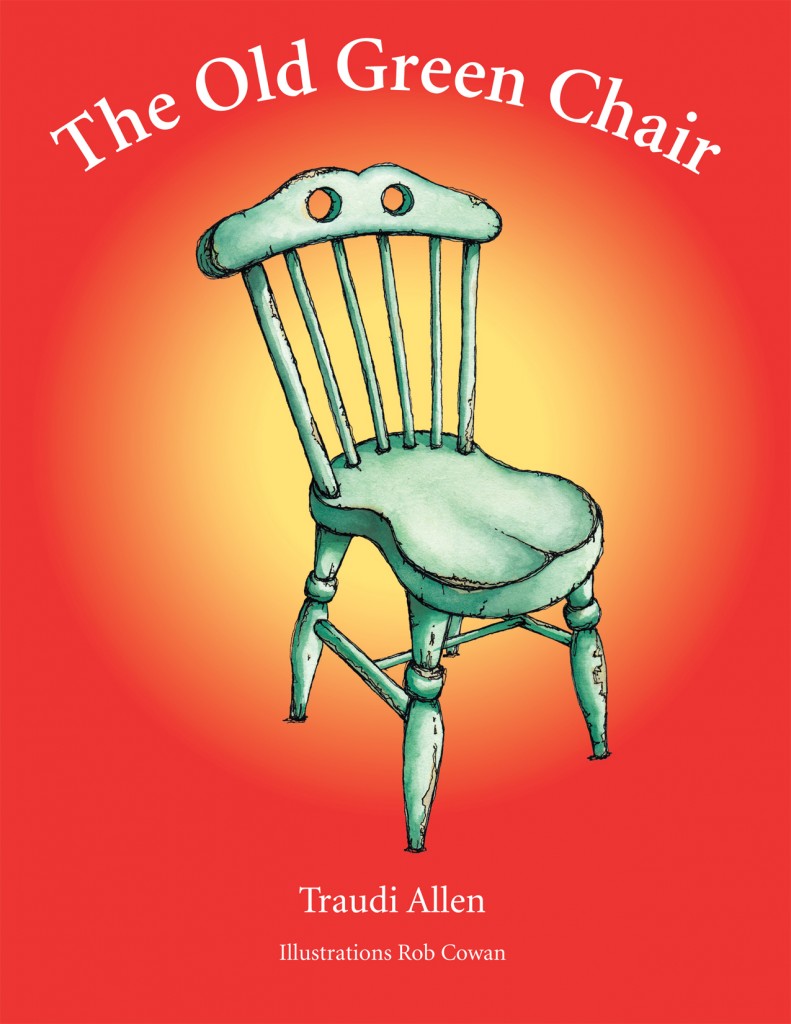Author Showcase
In a time when we worry about whether war will break out, when the next extreme weather event will hit and if sweet children will die in their classroom, the idea of keeping a positive frame of mind might seem trite, if not unachievable. And it’s not a new idea: ‘keep your chin up’; ‘pull yourself together,’ turns of phrase once commonplace are now long out of fashion. Abraham Lincoln is reputed to have said, ‘Most folks are about as happy as they make up their minds to be.’
In the positive psychology field there are experiments that back-up the usefulness of an optimistic frame of mind, which has also been shown to improve health. In the “alternative” domain the same idea is taken further where it is argued that one can visualize an outcome and then watch and wait for it to occur.
 The Old Green Chair is a modern family fable from the House Series of Picture Books for Children that focuses on the issue of positive thinking in a story form that is comprehensible to tiny tots. Household objects interact with multi-racial and single parent families that are reflective of society today. Each of the books in the series operates on a number of levels. One might read The Old Green Chair as a story about recycling, but it has a more profound intent in its concern with the power of positive thought.
The Old Green Chair is a modern family fable from the House Series of Picture Books for Children that focuses on the issue of positive thinking in a story form that is comprehensible to tiny tots. Household objects interact with multi-racial and single parent families that are reflective of society today. Each of the books in the series operates on a number of levels. One might read The Old Green Chair as a story about recycling, but it has a more profound intent in its concern with the power of positive thought.
The chair has seen better days and experiences some very difficult times, but manages to find a startling solution, simply by remaining optimistic. It has a clever and kind assistant who, by thinking a little differently, improves the life of the chair as well as her own.
Lest you think this all too serious, there is a sense of fun in these tales, particularly as seen in the illustrations that complement the text by filling in detail such as the identities of family members involved, as well as providing whimsical details that occur alongside the main story.
In each of the books, events move from intolerable to enjoyable by a simple shift in attitude. Another in the series: The Knife and the Fork Go Dancing might show a child how to set cutlery for dinner, but at another level it just might give him or her ideas about how to get along. There are some bad arguments but there are also solutions.
The warring knife and fork mirror frequently occurring sibling situations in which one child will complain that its brother or sister is given some advantageous situation or preferential treatment. The spoon, the wisest of the cutlery, takes a more benign stance than its brother and sister knife and fork and illustrates how good it is to be the recipient of an affectionate gesture from the individual with whom one is battling. It asks the knife and fork how they feel when they are fighting, so demonstrating the difference in atmosphere when harmony reigns.
Traudi Allen, explains that cutlery and other such household objects were chosen as central characters for the series because they are found in almost all households, regardless of socio-economic status; there is no need to buy anything else to help the imagination along. Little children are at least vaguely acquainted with cutlery, doors and chairs and can enact the dramas themselves.
The third in the series, The Squeaky Door, is concerned with perception and the way a point of view can influence what is actually seen as well as what will ultimately eventuate. The story tells of a father who is irritated by a door that squeaks, while his children believe the door is actually laughing. To the father, it is just an annoying door; to the children it is a cheerful friend. Just as in The Knife and the Fork Go Dancing, it is the little people who are privy to the wisdom that is divulged, while the parent remains oblivious. As such, the child might glean that learning can occur quite independently of a caring adult.
Through the simplest language and minor drama, the stories show ways of dealing with life that defy the obvious and that obstacles need not be ends in themselves, but gateways through which to discover more favourable paths and thereby, significant life improvements.
The Knife and Fork Go Dancing
The Old Green Chair
The Squeaky Door
By Traudi Allen; Illustrations by Rob Cowan
Available for purchase at Balboa Press
About Traudi Allen
Dr. Traudi Allen is a writer and art historian with a long record of publication. She has published books on some of Australia’s most significant artists and art movements along with a number of articles, essays and reviews. She has lectured in art history and for many years presented interviews on art subjects for ABC radio. The second book in her children’s series has recently been released and the third, titled The Squeaky Door, is due out soon. She is also currently completing a book of historical fiction for adults.
For more information on Traudi Allen and The House Series of Picture Books for Children, visit www.thehousepicturebooks.com
The Author Showcase is a place for authors and illustrators to gain visibility for their works. This article was provided by the author. Learn more …

